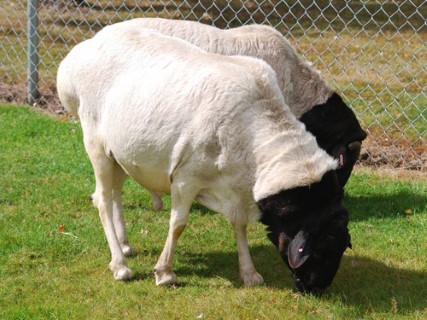Somali sheep, indigenous to the Somali region in Africa, are esteemed for their resilience and suitability for meat production in diverse agricultural settings.
Characterized by their distinct appearance, Somali sheep typically boast a white fleece with a striking black head, a defining feature that sets them apart. Notably, both male and female Somali sheep are naturally polled, contributing to their streamlined and efficient management.
Belonging to the fat-rumped category of sheep breeds, Somali sheep exhibit robust and well-developed hindquarters, a trait that enhances their suitability for meat production. Beyond their intrinsic value as a meat source, Somali sheep hold historical significance as the immediate predecessors of the Blackheaded Persian breed. Originating in South Africa during the late 19th and early 20th centuries, the Blackheaded Persian breed owes its lineage to the Somali sheep, serving as a testament to their genetic legacy and adaptability.
Moreover, Somali sheep have played a pivotal role in livestock improvement programs across various regions, particularly in Africa and tropical climates worldwide. Their genetic influence, particularly through crossbreeding initiatives, has contributed to the enhancement of local sheep populations, fostering agricultural sustainability and food security initiatives.
